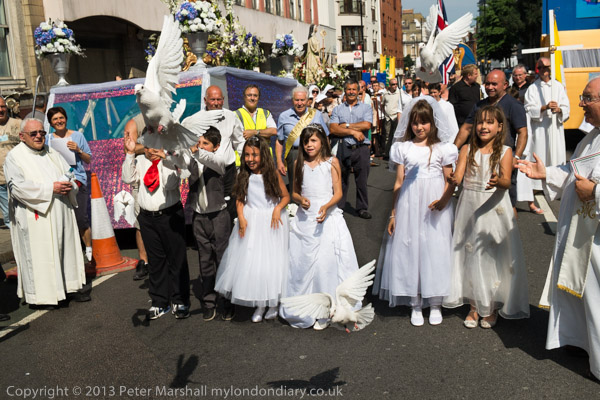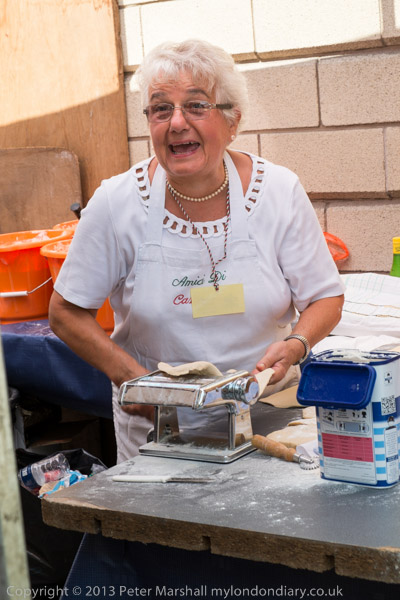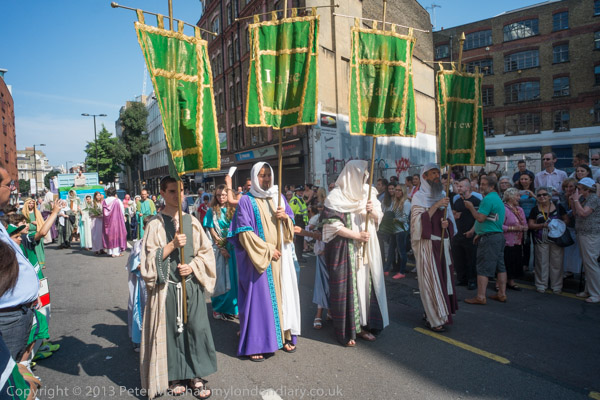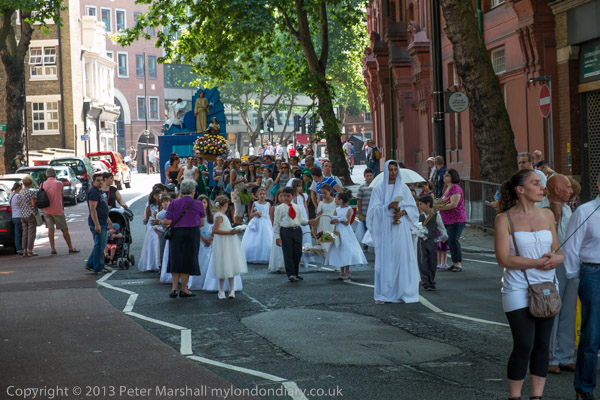Copyright, McExploitation & The Martydom of Ali: On Sunday 15th October 2006 I went to look at paintings in the National Gallery. I didn’t take any pictures and I seldom do of the work in art galleries; photography seldom produces decent images of paintings, and other people have done it better than casual exhibition visitors can for reproduction in books, postcards etc that we can buy. And other people holding up phones or cameras repeatedly in front of pictures can be very annoying.
Photographing art work is a skilled job, but I was pleased by a recent UK court decision that made clear it is not one that meets the requirement of originality needed to establish a new copyright, as the aim is simply a mechanical reproduction.
Artworks themselves do have copyright, but this expires 70 years after the death of the artist. So as Picasso died in 1973, his pictures are still copyright until 2043. Of course copyright law is complicated and is different in different countries and nothing that I write should be taken as legal advice!
After that I photographed a protest at Leicester Square outside McDonald’s against their food and in the afternoon went to an annual Muslim religious procession at Marble Arch and on Park Lane. Finally I called briefly at Trafalgar Square where ‘Diwali in the Square’ was just starting. Here with minor corrections is what I wrote about my day in 2006, with a few of the pictures – there are many more on My London Diary.
21st Global Day of Action against McDonald’s

Sunday I started off in the National Gallery, looking at the new presentation of their more modern work in ‘Monet to Picasso’. Then it was up to Leicester Square, where I arrived just as the clock was about to do one of its major performances at 12.00. This was also the start time for the demo outside McDonald’s.
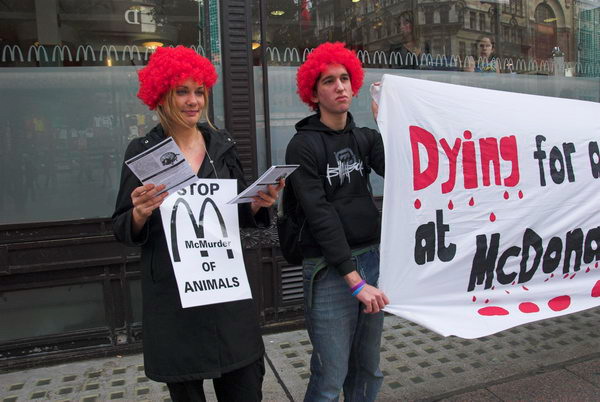
While I was there around 15 people held up banners and handed out leaflets, most of them wearing bright red wigs. The leaflets stated that McDonald’s were only interested in making money, and that the food that they claimed was nutritious was “processed junk food – high in fat, sugar and salt, and low in fibre and vitamins.”
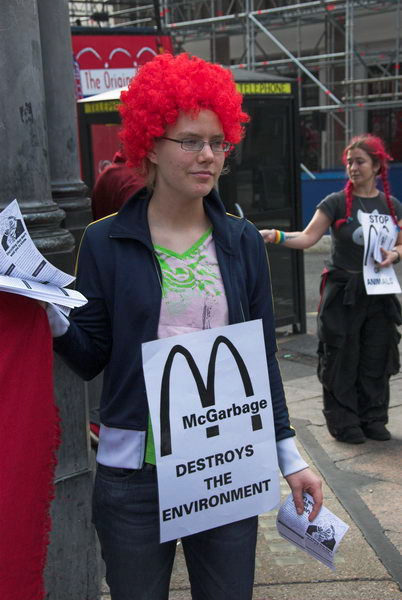
The leaflet claimed that animals are cruelly treated to produce meat for us to eat and that the workers in fast food industry are exploited, with low wages and poor conditions – McDonald’s have always opposed workers rights and unions.

As the world’s largest user of beef, McDonald’s are also helping to destroy the planet; each “beef burger uses enough fossil fuel to drive a small car 35km and enough water for 17 showers.” Beef cattle produce large amounts of methane, making a major contribution to global warming, and the company’s largely unnecessary packing involves use of damaging chemicals as well as using up forests and, after use either littering the streets if polluting the land through landfill sites.
For once the police – at least while I was there – behaved impeccably. There were 2 women police there, and they stood and watched; when someone from Macdonald’s came to complain he was informed that people had a right to demonstrate, so long as they did so within the law. A few of the public refused leaflets but most took them. Again a few stopped to argue, rather more stopped to take pictures of the event, and several posed in front of the demo for pictures.
21st Global Day of Action against McDonalds
The Martydom of Ali

I left the McDonald’s protest after around 45 minutes to have my lunch – sandwiches rather than a Big Mac – and left for Marble Arch where Hub-e -Ali were preparing to celebrate the Matyrdom of Imam Ali which took place in Kufa, Iraq almost 1400 years ago. The Jaloos or procession began with a lengthy session of addresses and mourning. Although I could understand little of what was said, the voices clearly conveyed the extreme emotion of the event, which had many of those present sobbing. There were tears in my eyes, too, partly from the emotion of the event and partly from the incense fumes that were filling the air.
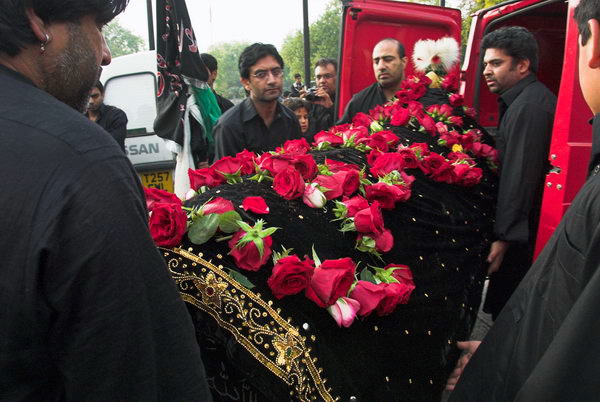
When the Tarboot (ceremonial coffin) appeared, there was soon a scramble to touch it, at first by the men, then later the women were also allowed to come and touch it.
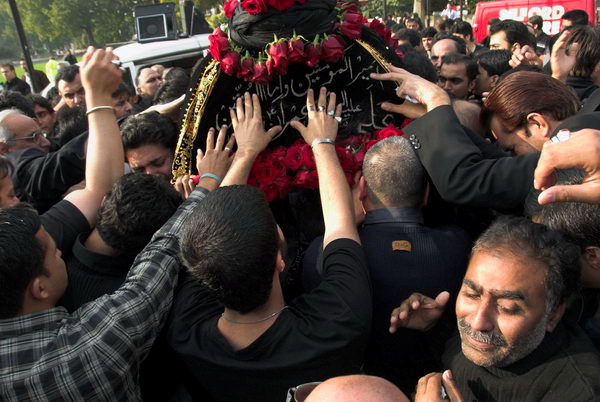
Many of the men then removed their shirts and started Matam, beating their breasts vigorously, many were distinctly red and bruised, and their backs also showed scars.
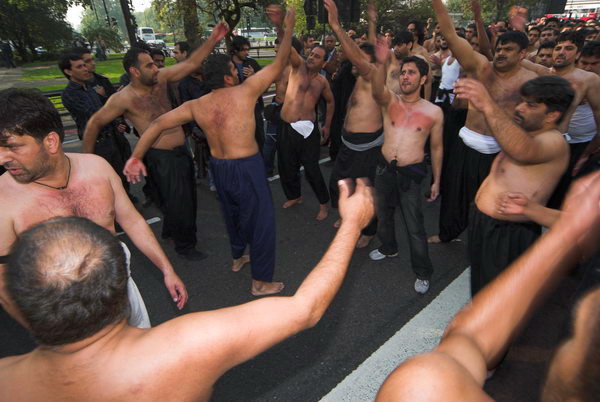

The procession led off down Park Lane, with the banners and men being followed by the Tarboot, and the women forming the end of the procession.
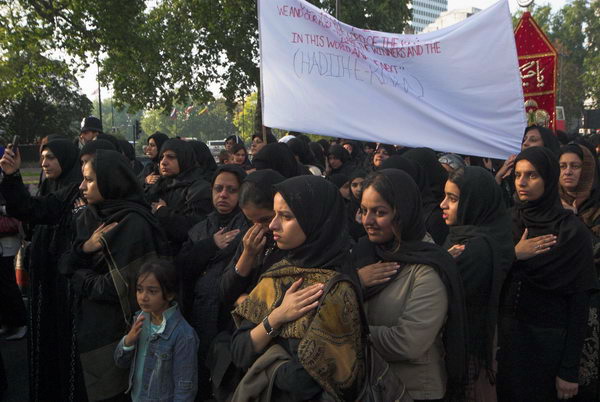
The women show their grief too.
Many more pictures of the event on My London Diary.
Diwali in the Square
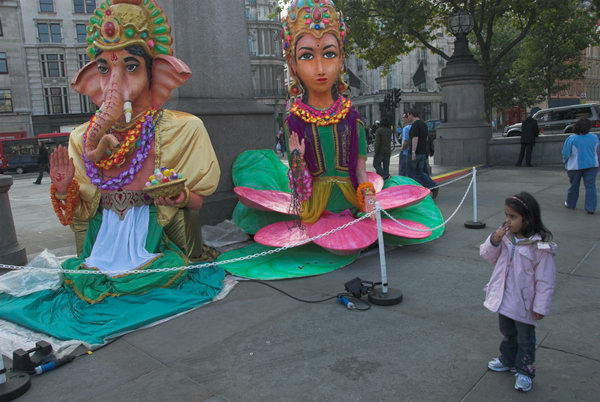
Having taken a few more photographs, I left for home, stopping off briefly at Trafalgar Square to see the start of the Diwali celebrations there. Diwali In The Square was just starting, but I was tired and continued on my way home.
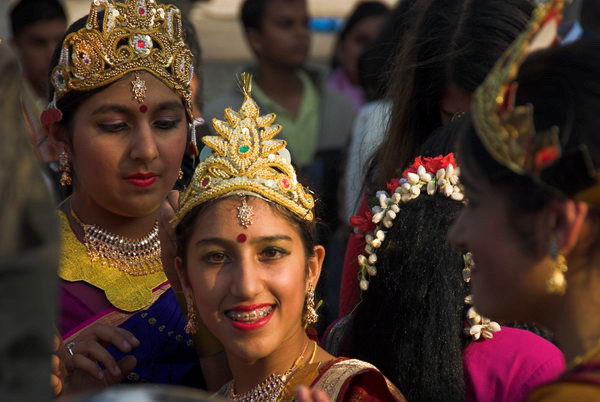
Flickr – Facebook – My London Diary – Hull Photos – Lea Valley – Paris
London’s Industrial Heritage – London Photos
All photographs on this page are copyright © Peter Marshall.
Contact me to buy prints or licence to reproduce.
